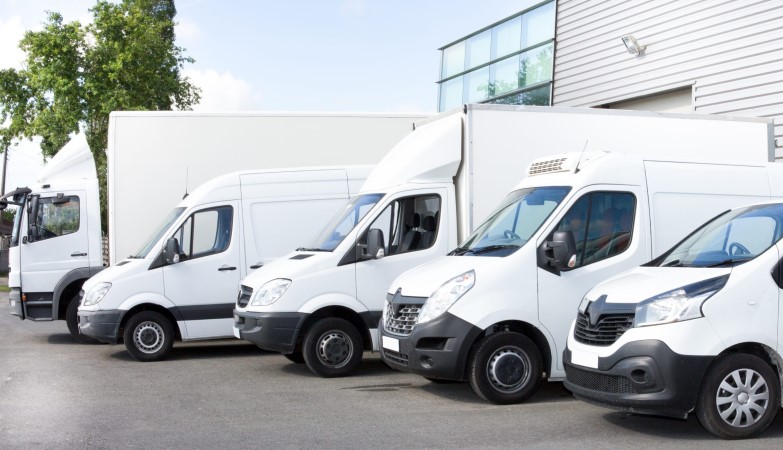
Business owners and directors frequently opt to insure their vehicles with a fleet policy as it is convenient and easier to manage. A fleet insurance policy is a coverage designed for companies that provides protection for multiple vehicles and drivers under one policy. There is no need to obtain separate policies for different vehicle types with a fleet policy, and coverage can frequently include different modes of transportation like cars, motorcycles, vans, and trucks.
Combining everything under one policy also means that payments and renewals can be managed easily. There is no need to make premium payments for different vehicles, and annual renewals can be handled all at one time. This type of insurance is designed for business and company users only and cannot be used for private vehicle insurance purposes.
Types of fleet insurance
Fleet insurance, like most other insurance, can be structured to provide different levels of protection. Depending on vehicle use, risk, and available budget, coverage can be purchased that insures against different claims.
Coverage can be provided that is:
- Fully Comprehensive
- Third-Party, Fire and Theft
- Third-Party only
Along with different available levels of coverage, fleet insurance has also been created that covers specialised business types and protects vehicles from circumstances that are explicitly connected with their particular field or industry.
Some of this specialised fleet insurance includes protection for the following types of business:
Taxi Fleet Insurance – takes into account the increased risk associated with extended driving time and passenger transportation as well as the varied assortment of vehicles used.
Hazardous Goods Fleet Insurance – specifically for business operations concerning the transportation of harmful or hazardous substances such as chemicals, toxic waste, or radioactive fluids.
Courier Fleet Insurance – designed for companies that operate vehicles daily to deliver and pick up goods. Takes into account risks from thefts and time spent driving to and from customers and delivery points.
Light Goods Fleet Insurance covers the operation of small commercial carrier vehicles below 3.5 tonnes, which perform deliveries or other functions, including flatbeds, pickups, and refrigerated trucks.
Minibus Fleet Insurance – protects minibus operators that transport passengers. Airport shuttles, patient transfer, and driving minibuses for clubs or charitable organisations all fall under this category.
In addition to the different types of fleet policies, insurance may also be set up with named drivers or any driver designations. Named driver policies are for organisations that know exactly who will be operating their vehicles. Any driver policies mean that with company permission, vehicles can be operated by anyone. Though agreements may need to be signed and a record of driven miles maintained.
While there are multiple types of fleet insurance to protect commercial vehicles, some common exclusions are in place. For example, most insurers will not cover claims for things like tyre damage, breakdown, or theft due to a vehicle being left unlocked.
How to get fleet insurance
To compare fleet insurance, a policy can be purchased in several ways, including online, directly from an insurance company, or with the help of a professional broker. Premiums will vary depending upon multiple factors. For example, the number of vehicles, age, type, and value, and the kind of coverage needed will all affect the cost.
For business owners considering acquiring a fleet policy, it can be advantageous to compare quotes from different insurance companies as premiums often fluctuate dramatically across providers. Additionally, the cost of fleet insurance can increase with the number and of vehicles and be impacted by the excess payment required.
To view multiple quotes from different providers, an insurance comparison engine can be a useful tool to help search for the best coverage. Once information is entered, quotes are provided from a number of insurance companies to display information on cost, monthly premiums, and other relevant information. Quotes may then be reviewed and compared to determine the best deal available
How many vehicles do you need for fleet insurance?
For a standard fleet motor insurance policy, the minimum number of vehicles that will qualify a company for a policy is 2. Of course, there are some exceptions to the rule, as in the case of minibus fleet insurance which requires 3 or more vehicles. Still, generally speaking, 2 vehicles is the lower limit needed to be eligible for a policy.
Fleet policies have been designed to offer protection to businesses large and small, so while companies with 2 or more vehicles can purchase coverage, larger organisations have also been considered. For these reasons, the majority of insurance providers will offer policies that cover medium and large businesses.
For users who operate extensive fleets, the maximum number of vehicles allowed under a single fleet policy is typically 500. This figure can be made up of numerous vehicle types, including cars, vans, trucks, and motorbikes.
